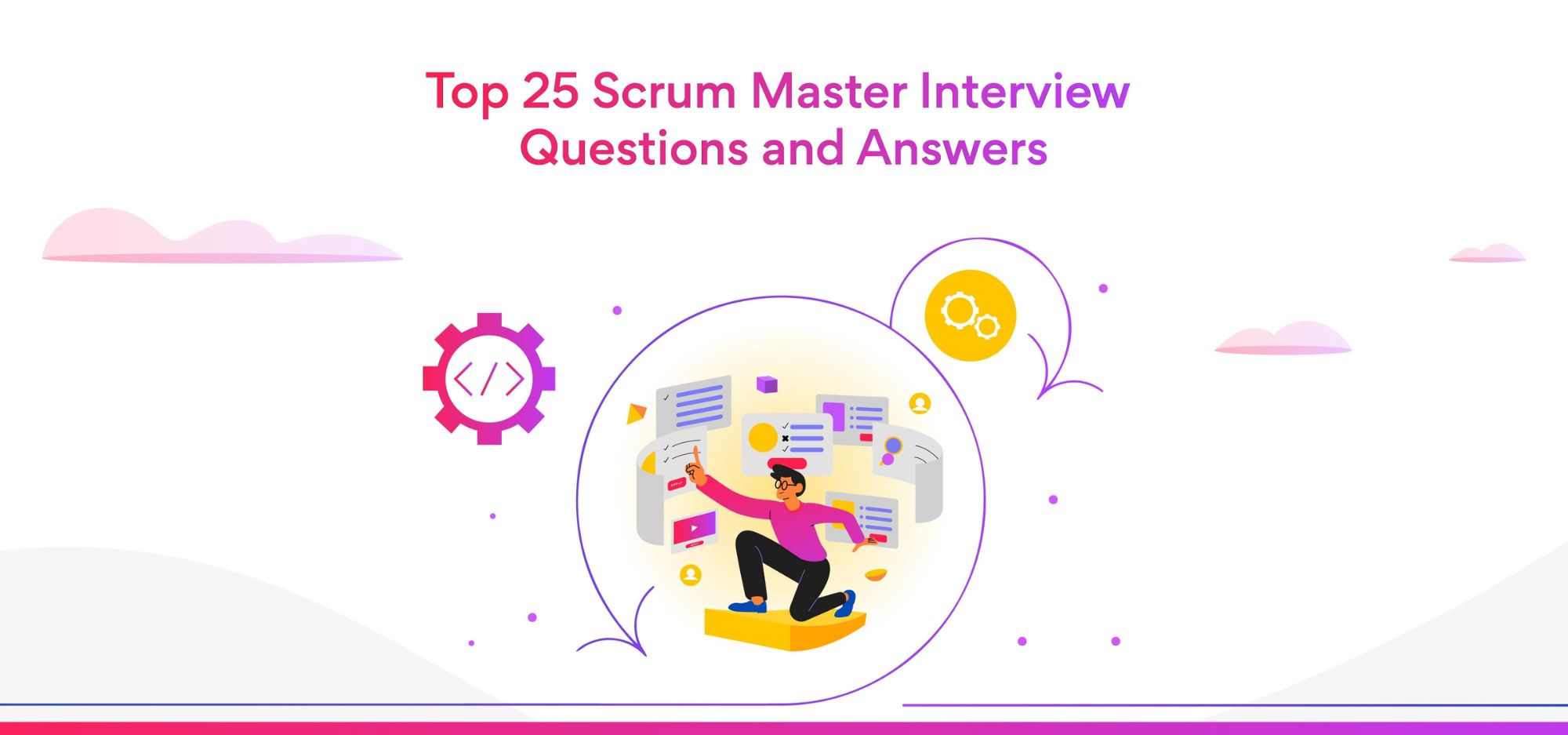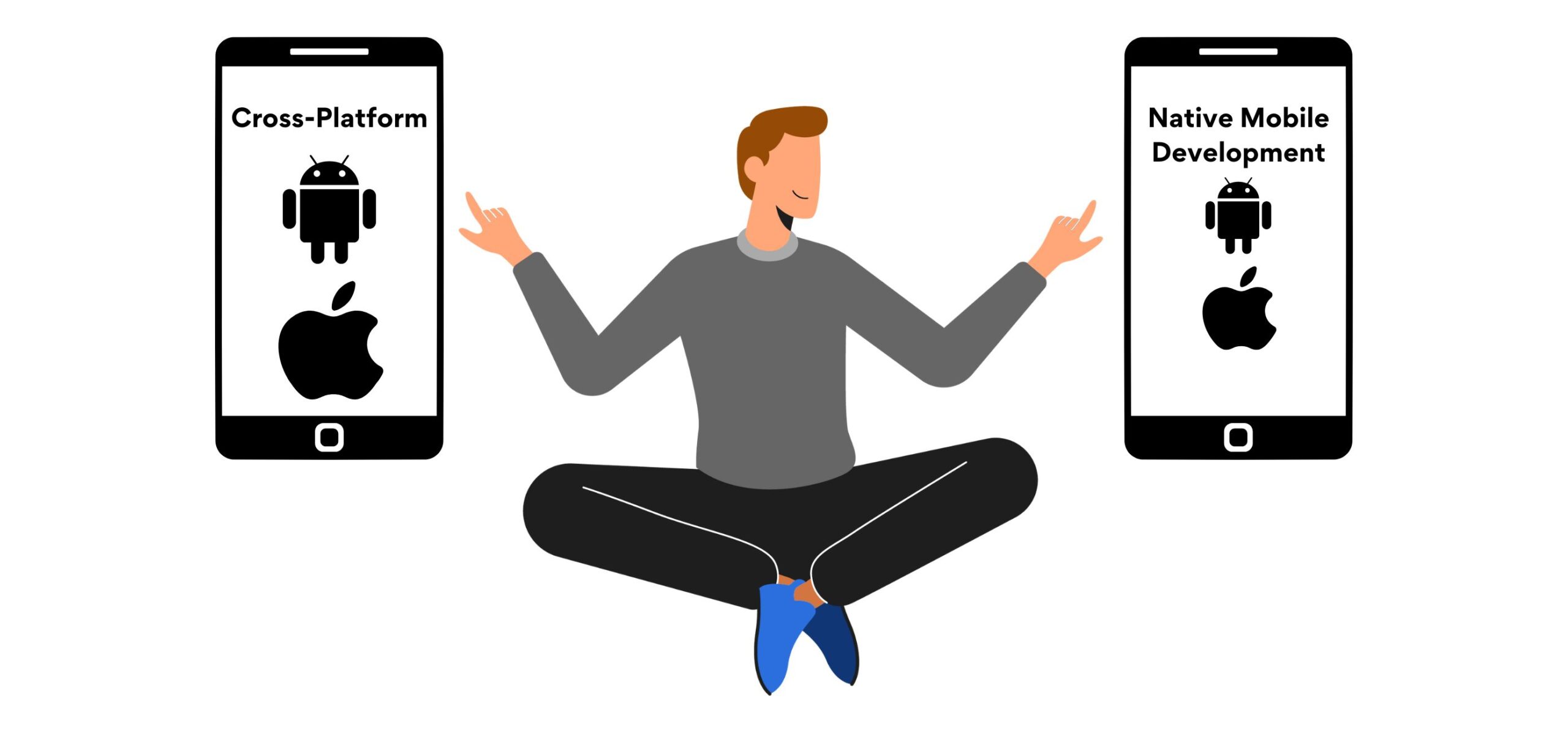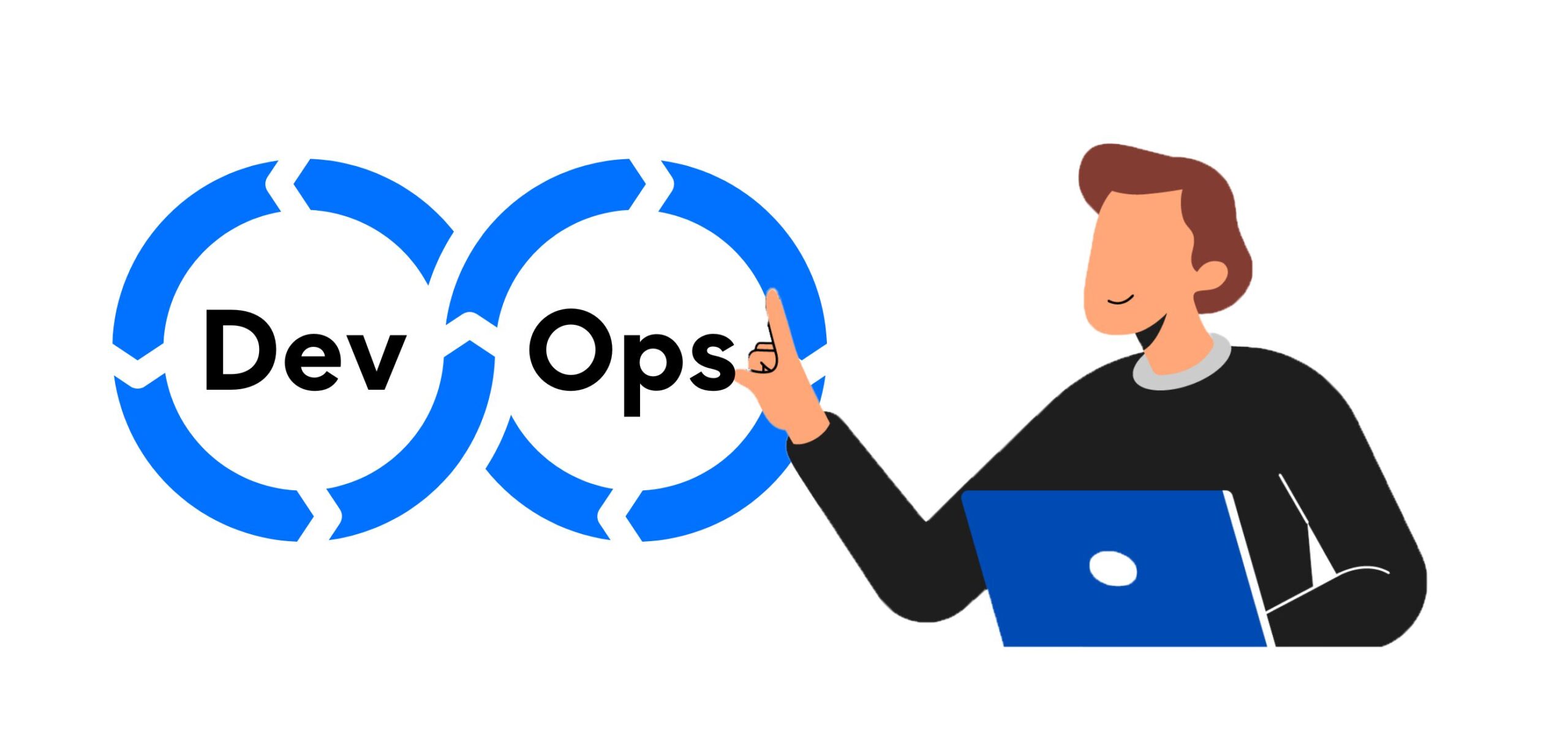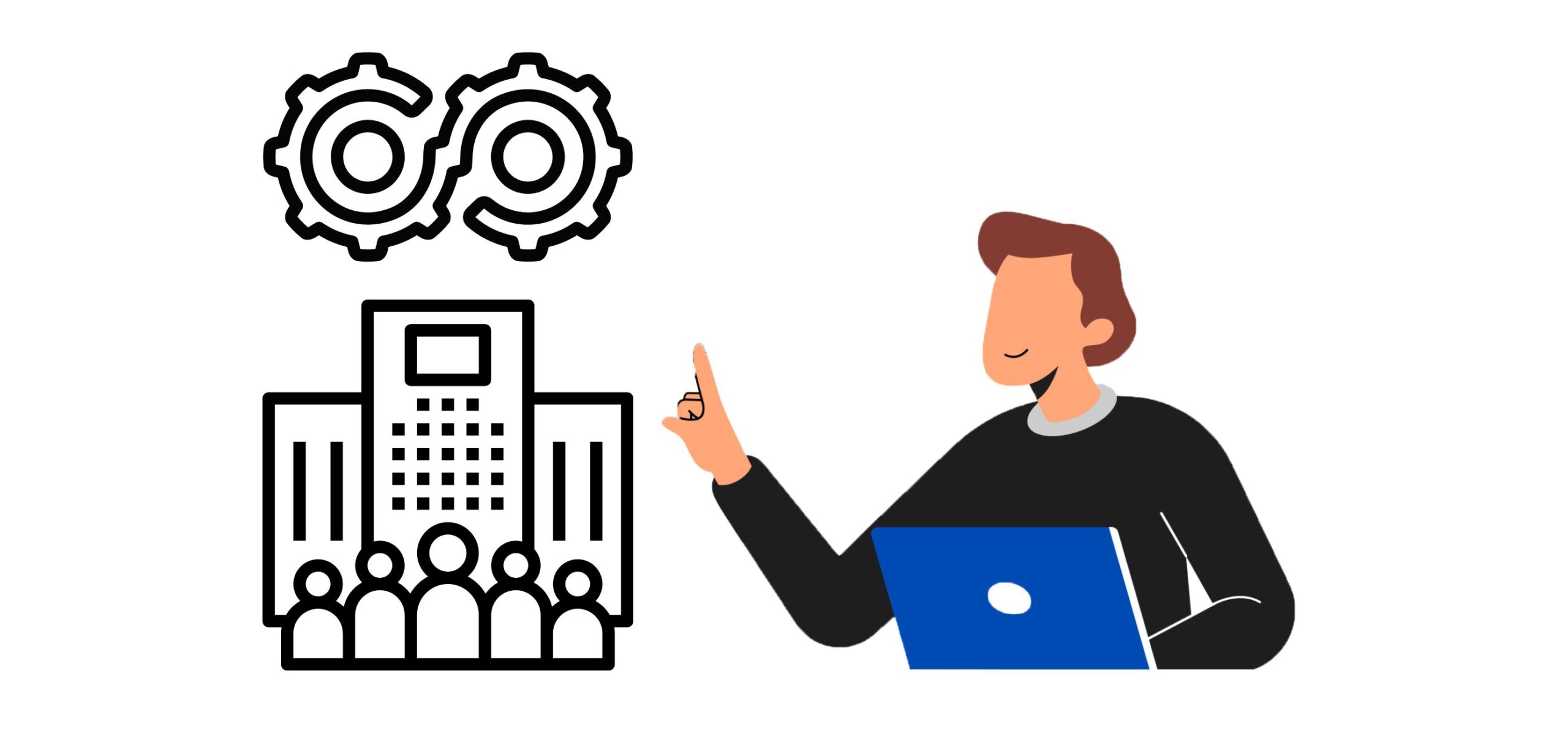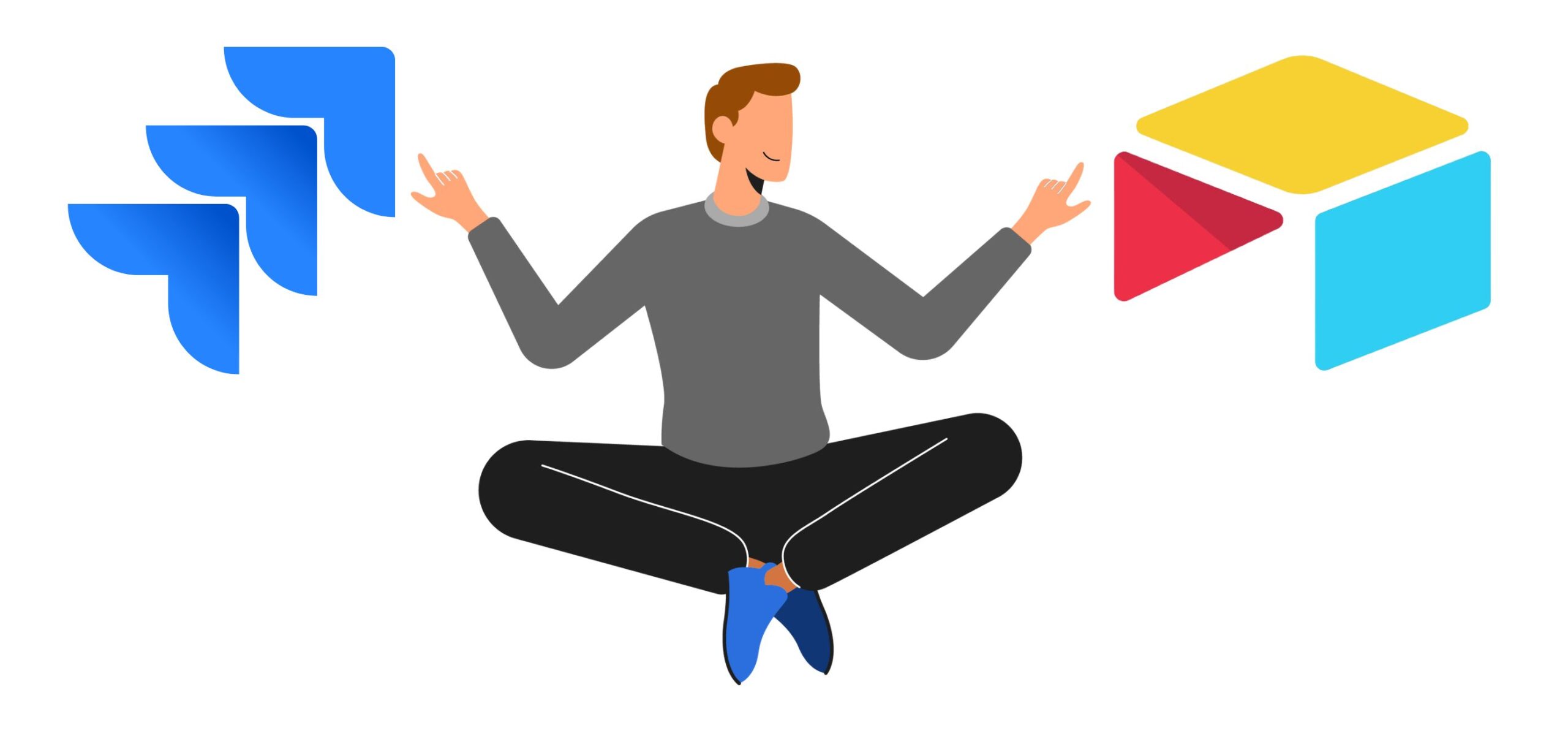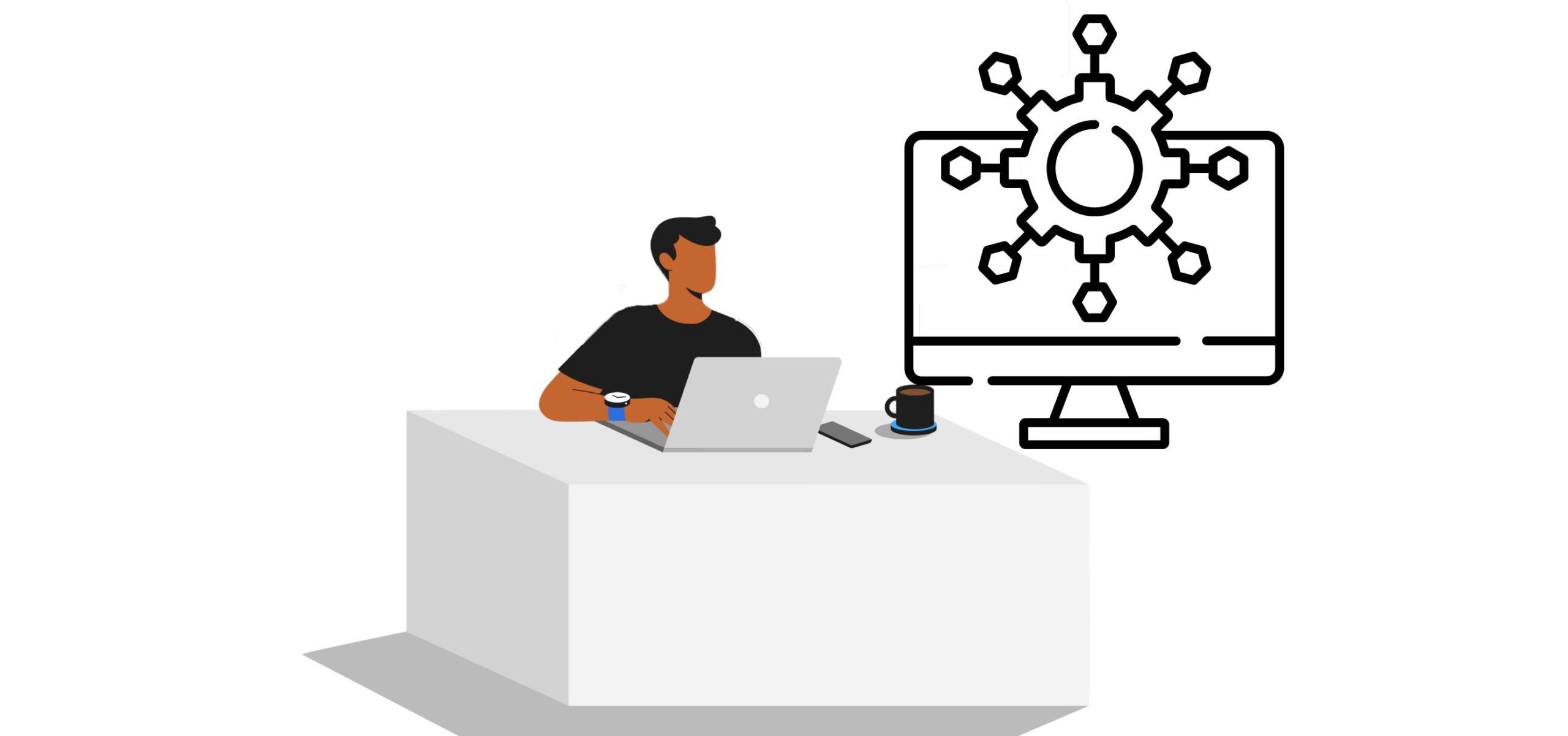Top 25 Scrum Master Interview Questions and Answers for 2023
What is Scrum? What are the different roles in Scrum? What are Scrum artifacts? What is empirical process control in Scrum? How do I prepare for Scrum master interview questions?
This blog post will help you answer all these questions.
Beginner Scrum Master interview questions
-
What is Scrum?
Scrum is an agile framework used by cross-functional teams to organize tasks, goals, and other project-related objectives. Scrum helps you break large and complex projects into small tasks that different teams can work on. Scrum reduces the turnaround time to complete a task and helps teams achieve shorter cycles for project delivery. -
What are the features of Scrum?
Features of Scrum include…
- Better visibility
- Higher transparency
- Iterative releases
- Continuous improvement
- Fast adaptation to change
- Accelerated execution of ideas
- Satisfied customers
- Better visibility
-
What are the different roles in Scrum?
There are three different roles in Scrum that include Scrum master, product owner, and development team.
- Scrum Master
A Scrum master is responsible for managing the Scrum team efficiently. This includes keeping the team on track, scheduling meetings, and performance reviews. The Scrum master can easily manage various teams of different organizations and keep a close check on issues as they arise. - Product owner
The product owner makes sure that the team working on a project aligns with product goals. Product owners set the product vision, manage product backlogs, evaluate progress and give timely feedback.
Also, product owners communicate ideas to external stakeholders to update product goals. - Development team
A development team can consist of project-specific members with expertise in engineering, data analysis, and UI/UX design, among others, per the project demand.
See Also: Top 21 Node JS Interview Questions and Answers for 2022
- Scrum Master
-
What is Scrum sprint?
Scrum Sprint is a time-boxed event that can last up to four weeks wherein the team focuses on one goal. The goal can be a new feature or an improved iteration of an earlier feature. -
What are Scrum artifacts?
Scrum artifacts consist of information used for product development and detailing product tasks, and backlog items. The three types of scrum artifacts include…
Product backlog
Product backlog consists of new features, bug fixes, infrastructure changes, and other activities that define clear objectives for product development.
Sprint backlog
Sprint backlog consists of items that teams plan to complete during the project sprint. The same items can be in the product backlog until they shift to the sprint backlog.
Product increment
Product increment consists of all product backlog items that teams complete during sprints and the incremental value of previous sprints. -
What are daily stand-up sessions in Scrum?
Daily stand-up sessions in Scrum are 15 minutes long and can deliver insights into completed tasks, pending tasks, and any issues that the team is facing. -
What is Scrum-ban?
Scrum-ban is a combination of Kanban, a framework used to implement DevOps and agile software development. Scrum-ban has the structure of scrum and the flexibility of Kanban. With the help of Scrum-ban, teams can utilize a versatile approach to workflow management.
Also, read: Top 21 SQL Interview Questions and Answers for 2022
Intermediate Scrum Master interview questions
-
What is empirical process control in Scrum?
Empirical process control in Scrum means working in an experience-based and fact-based manner. Empirical process control ensures that project progress is transparent and based on earlier observations. It helps you improve the work you are doing and plan in line with earlier developments. -
What is a Scrum burnout chart?
Scrum burnout charts are a graphical representation of the time remaining for a particular project and the amount of work left for the project.
Scrum burnout charts consist of:
Ideal effort guideline
Real progress of the effort
X-axis that displays working days
Y-axis that displays the remaining effort -
What are the impediments and sashimi in Scrum?
Impediments refer to any obstacles that stop the progress of work, whereas Scrum announces sashimi when a task is done. -
What is a user story?
A user story provides simple explanations of one or more features of a project. The explanations contain the benefits of features for the end user. The main goal of a user story in Scrum is to communicate how a software feature will help the consumer.
At the beginning of product development, teams discuss how to go about creating a product and can record user stories for specific features. Also, as product development progresses, teams can create new user stories or add information to existing ones.
Below is the user story structure:
As a <Type of user>
I want <user goal>
So that<user benefit >
For example: As a customer, I want to shop from online platforms so that I do not have to go to the market. -
What are the advantages of a user story?
Advantages of a user story include…
- Link establishment between team members and end-user
- The user story’s syntax captures the objective, value, and benefit of the end-user
- Set acceptance criteria for different stories as per the user
- Flexibility to change user story as per new development
See Also: Top 20 TypeScript Interview Questions and Answers for 2022
- What are the key differences between Scrum and Agile?
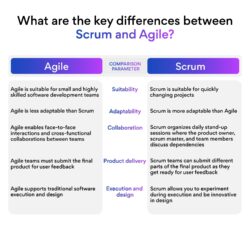
Scrum Master Interview Questions – Scrum vs Agile
-
How can you identify a good user story?
A good user story is one that teams can finish in a sprint, consisting of a well-defined acceptance criterion and few dependencies. Good user stories follow the INVEST- Independent, negotiable, valuable, estimable, small, and testable principle. -
What is the INVEST principle in Scrum?
The INVEST principle includes
I- The user story should be independent and not rely on any other story
N- The user story must be open to changes agreed upon by the team and product owner
V- The user story must add a certain value to the customer
E- The user story should estimate the time requirement
S- The user story must be small enough so that teams can complete it in a sprint
T- The user story must be testable and have good acceptance criteria -
What is timeboxing in Scrum?
Timeboxing allocates a specific amount of time in which teams must complete a task. Usually, timeboxes are not longer than 15 minutes, however, teams can always request the product owner to cancel a task if they think it will take more time.
See Also: Top 21 Vue JS Interview Questions and Answers for 2022
Advanced Scrum Master interview questions
-
What is sprint0 and spike in Scrum?
Sprint0 refers to a rough skeleton of the product backlog with release dates. It is lightweight, has a minimalist design, and has low velocity.
On the other hand, the spike is a collection of extreme programming activities that include prototyping, design, research, and investigation, among others. Spike helps you acquire the right information to understand product requirements and create reliable products. -
What is DoD in Scrum?
DoD stands for ‘definition of done’, which contains a set of deliverables, including written codes, unit and integration testing, release notes, and design documents, among others. DoD facilitates quantifiable project development by identifying the right deliverables on time.
DoD benefits include…
- Providing inputs throughout a product’s lifecycle
- Creating the steps necessary for iteration
- Checking product backlog items
- Assisting sprint review and sprint retrospective
- Establishing a checklist for product backlog
- Using task-oriented and appropriate technologies to improve efficiency
- Providing inputs throughout a product’s lifecycle
-
Who all take part in the sprint retrospective
A sprint retrospective is a meeting to analyze and address a product’s efficiency. It can include the Scrum master, the product owner, and all the members of the development team.
See Also: Top 21 AWS Interview Questions and Answers for 2022 -
What are the steps for risk management in Scrum?
In Scrum, there are five steps for risk management
Risk identification: In this step, you identify different times of risk associated with product development, including legal risks, environmental risks, regulatory risks, and market risks, among others.
Risk analysis: In this step, you analyze the scope of risk and how it can positively or negatively affect the business.
Risk ranking: Risk ranking includes the priority of the task based on how much loss the organization will incur if a task is not completed on time.
Risk treatment: Risk treatment includes deciding the course of action to eliminate risk after identifying it.
Risk review: Risk review includes all the steps from risk identification to risk treatment to conclude whether a risk is eliminated or not. -
What does the confidence vote mean in Scrum?
A confidence vote is a vote wherein all the team members reveal how confident they are about the product. Team members give a confidence vote after completing all the product tasks and user stories.
The purpose of the confidence vote is to increase transparency between team members by urging them to voice their concerns and reveal how much faith they have in the product. -
What is Scrum of Scrums?
Scrum of Scrums is a large team that includes different sub-scrum teams under the main scrum team. For example, let’s say the main Scrum team is scrum a, and then there are six sub-scrum teams, namely scrum b, scrum c, scrum d, scrum e, and scrum f. The main scrum team will oversee the products created by other scrum teams and take the final call on delivery.
Scrum of Scrums is effective in creating individual teams that have a clear communication path with the main team and other teams while creating different product features. Thus, Scrum of Scrums enables teams to deliver challenging products at scale by ensuring inspection and transparency in the product development lifecycle. -
What are the three Cs in the user story?
Three Cs in the user story includes card, conversation, and confirmation. A card refers to a written account of a user story that includes the plan of the user story and a time estimate for completion.
Conversation encourages scrum teams to talk to each other to create flawless user stories by discussing the problem and the solution before taking any action.
Confirmation consists of an acceptance criterion that tests the user story for certain conditions to confirm whether it serves the intended purpose or not. -
What is scope creep in Scrum?
Scope creep measures the rate of changes that occur in a project due to the decision of external stakeholders and internal teams. Scope creep identifies the growing project requirements and the rate at which they increase to help teams manage the change and take necessary steps. Here are the ways in which scope creep helps manage product development…
Tracking project progress and establishing a baseline for scoping new development.
Preparing a comparison of how different the actual work is different from an initially discussed plan.
Locating the source of changes and how they will impact future actions.
Selecting a preventive or corrective course of action in response to suggested changes.
See Also: Top 21 Angular Interview Questions and Answers for 2022 -
What is a velocity chart in Scrum?
The velocity chart depicts the average amount of work a scrum team completes during a sprint. Scrum teams use velocity to calculate how much time a task will take for sprint teams to finish. The data to calculate the velocity or speed of work of scrum teams consider previously completed user stories for different features in earlier sprints.
Summary
Scrum is a popular framework for effective project management that helps the team work together with greater transparency and trust. Hiring managers will ask Scrum Master interview questions of varying difficulty to test your knowledge of the framework. Thus, a developer must prepare well with the above-mentioned questions before appearing for an interview.
Are you looking for software developer jobs?
Try Turing.
Turing offers long-term high-paying remote jobs in top U.S. companies. Visit Apply for jobs page today.
FAQ
What are the three questions in daily scrum meetings?
The three questions in daily scrum meetings are what did you do yesterday? What do you plan to do today? and what challenges are you currently facing?
Join a network of the world's best developers and get long-term remote software jobs with better compensation and career growth.
